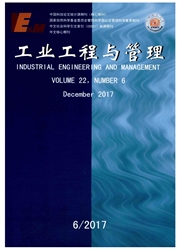

 中文摘要:
中文摘要:
通过对某大型制造企业120名一线员工进行预调查,修订了职业紧张量表(OSI—R),使其在制造业一线员工群体中具有良好信度、效度。之后使用修订问卷对同一企业1595名员工进行工作压力调查,探讨了不同类别员工群体工作压力特点差异,以及不同工作压力源对员工生理、心理、工作满意度、人际关系等的影响方式。研究结果发现:人口统计信息、职业信息中若干分类变量对员工工作压力影响显著。回归分析表明“任务冲突”是影响员工心理、业务、人际关系紧张最关键的预测因子,而生理紧张反应则主要由工作过重以及应对资源不足引起。
 英文摘要:
英文摘要:
A survey was conducted in a large manufacturing company among 120 workers. The Occupational Stress Inventory-Revised (Chinese Edition) was revised towards this occupational group. Then another survey involving 1595 workers was conducted. The differences of occupational stress among different worker groups were investigated in the second survey. How different stressors influence workers~ personal strain (including vocational stress, psychological strain, interpersonal strain and physical strain) was analyzed. The results show that some classified variables had significant impact on occupational stress. The regression analysis indicated "role boundary" was the most important stressor of vocational stress, psychological strain and interpersonal strain. However, the physical strain was mostly resulted from heavy workload and insufficient coping resources.
 同期刊论文项目
同期刊论文项目
 同项目期刊论文
同项目期刊论文
 期刊信息
期刊信息
